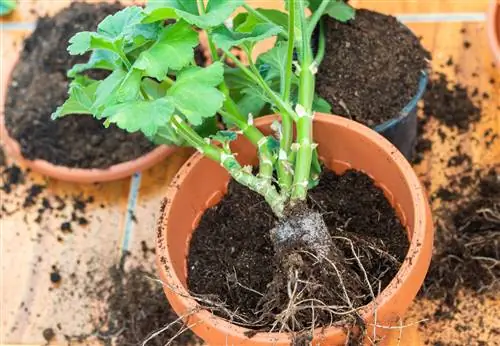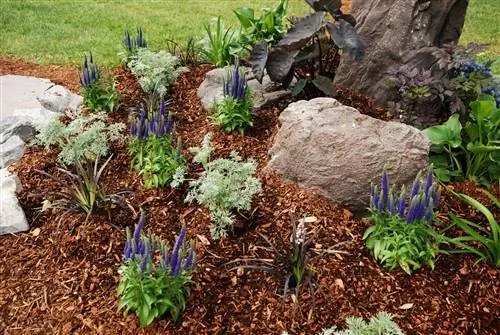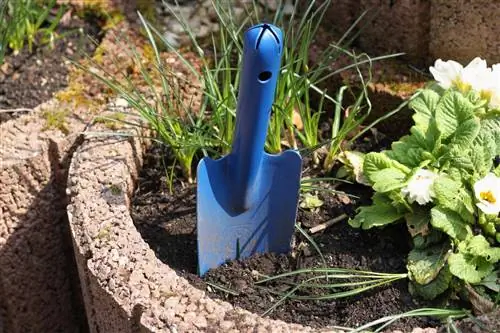- Author admin [email protected].
- Public 2023-12-16 16:46.
- Last modified 2025-01-23 11:22.
The ideal potting soil contains all the important nutrients for your plants. It gives them the right support and stores water. Find out here how often you should change the substrate of your plants on the balcony, in the pot and in the bed.

How often should you change the potting soil in the balcony box?
You shouldreplace the potting soil in the balcony box every year The substrate is heavily leached by the plants due to the limited space. It is best to use fresh soil when replanting in spring and compost the used soil in your garden.
How often should you change potting soil from vegetable plants?
Most vegetable plants are annuals and do not need to be repotted during the year. Regular and adjusted fertilization is enough for you. After harvesting, you can dispose of them along with the soil in the compost. Young vegetable plants should be planted in fresh soil. Perennial vegetable plantssuch as herbs or fruit trees in pots needevery year fresh soil. The best way to do this is to carefully free the root ball from the used soil in spring and fill the pot with fresh substrate.
How often should you change the potting soil of houseplants?
Houseplants should be repotted into fresh potting soil aboutevery two to three years. Also pay attention to whether the plant still has enough space in the pot or whether it may need a larger pot. However, this should be a maximum of three centimeters larger in diameter than the previous one. You should also take the opportunity to search your plant and the root area intensively for diseases and pests. If there are any irregularities, you should act immediately.
What are the benefits of changing the potting soil?
There is alimited supply of nutrients in the pot This can be expanded by adding fertilizer, but it is usually concentrated in one direction. Unused nutrients accumulate and s alt the earth. This means that it is even harmful to the plants and can attack the roots. Fresh substrate not only brings new nutrients, but is also particularly structurally stable. This means that water is stored better and released to the plant when needed. The earth no longer becomes so muddy.
Tip
Reuse the used earth
Repotting your plants can result in a lot of used soil. However, the leftovers only belong in household waste if there are diseases or pests in them. Use the soil for your compost and mix it with garden or kitchen waste. You can also improve the potting soil with garden soil and sand and reuse it for undemanding plants.






